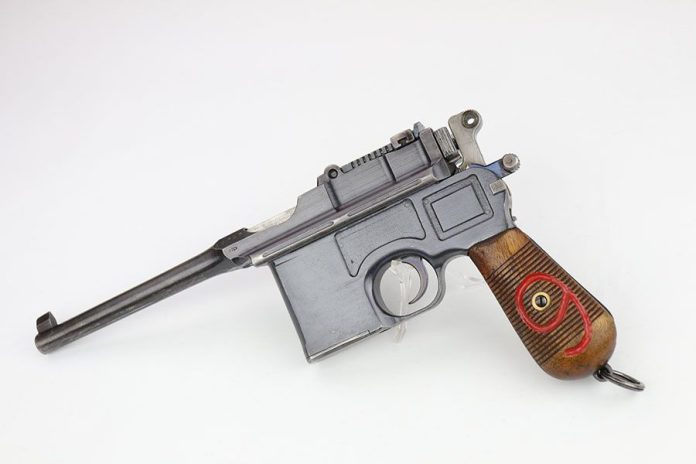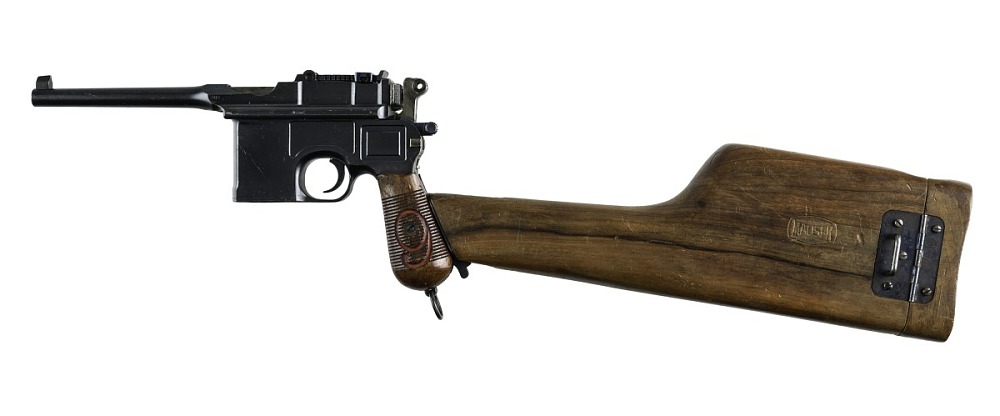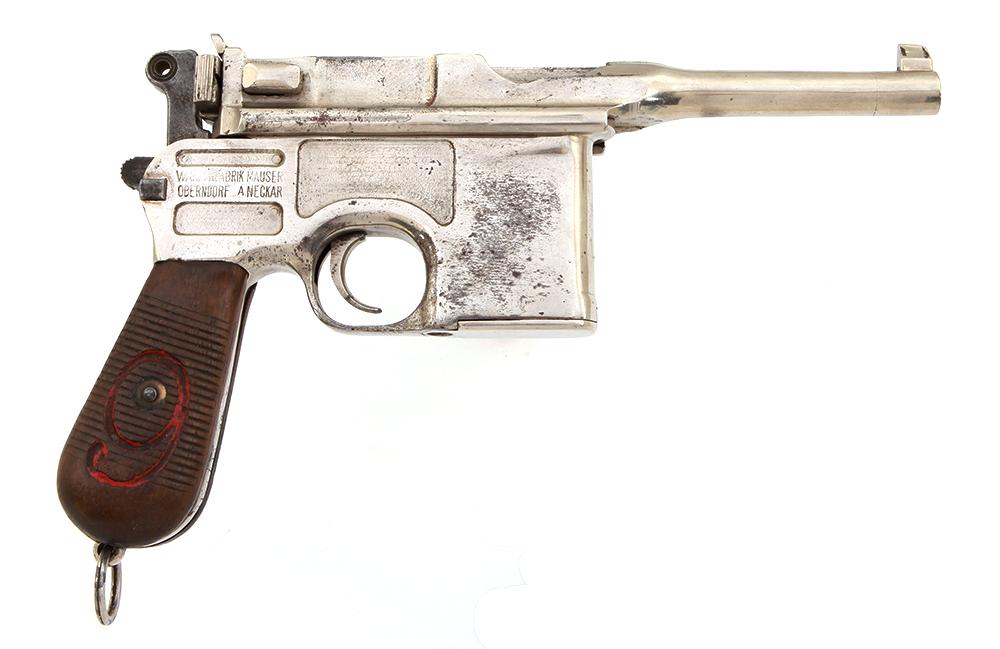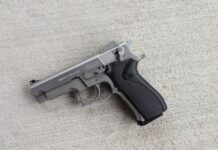
Of all the early automatic pistols out, the Mauser C96 design has to be one of my favorites. Just the aesthetics of the thing are eye-catching. Compared to the modern spartan black and blocky nature of handguns, the C96 is a joy to look at. The C96 was one of the most reproduced pistols out there and was used across Europe in the hands-on men like Winston Churchill all the way to the hands of Mexican military officers. Hell, one recently popped up in a photo in use by a Ukrainian family. One of the rarest variants and most interesting was known as the Red Nine.

I love reading authors that have a knowledge of firearms. One of my favorites is Stephen Hunter, the writer of Point of Impact. Point of Impact later became both a show and movie called Shooter. He drops names and guns often, he mentions a Red Nine, and it’s stuck with me since. My attempts to acquire one have been largely in vain. I continue to be fascinated by the Mauser C96 and the history behind the Red Nine.
The Red Nine – Behind the Name
It’s apparent where the name comes from the moment you see one. The broom handle grip has a massive nine carved into it, and that nine is often paint-filled red. This was done to distinguish the guns as 9mm. The 7.63 Mauser cartridge was far more common at the time, and it was easy to confuse which gun was which. It should be noted not every 9mm Mauser got the big red nine on it, but most did.

The reason the gun exists is because of World War 1. Germany was entrenched with the Luger, but this was a big war. They needed all the guns they could get. Germany contracted with Mauser to produce 150,000 9mm Mauser C96 pistols in 1916. The war ended before the full delivery was made, but enough was produced that they stuck around until World War 2.
The initial order called for not only the C96 but also a leather carrying harness, a takedown tool, a spare magazine spring, and a wooden device that acted as both a holster and a stock. The Red Nines are a bit large and ungainly for handguns, but the stock made it something akin to al a light rifle. I imagine the C96 would be a much lighter, easier to use, and faster firing option for trench clearing and made much easier to shoot with a stock.
Was the Red Nine Successful?
The Red Nine did offer a high capacity than the Luger by two rounds, and it wasn’t necessarily a bad gun. The fixed magazine required stripper clips to reload, which isn’t optimum. The 9mm round was no heavy recoiling round, especially in this time frame. It was certainly fine but was admittedly a bit dated even by World War 1. Handguns with removable magazines were becoming the norm. By the time World War 2 came around, this certainly wouldn’t have been a soldier’s first choice for combat.

The pistol is notoriously slow to disassemble and clean. As mentioned, it requires a takedown tool. It’s certainly not optimum for rough field conditions. It’s an awkward pistol due to its odd design, but it was functional and quite reliable. A reliable semi-auto for the era was a rare thing. The Mauser C96 and Red Nine Certainly hit the upper limits of turn of the country.
As A Collector’s Item
The Mauser Red Nine, and other C96 models, are quite popular with collectors. The Red Nine is often popular because the ammo for them is still widely available and easy to find if you have a working model. The ATF has the ability to remove certain firearms from the NFA as curios and collectibles. They used to do it fairly often, but sadly I don’t think that list has been updated in a decade.

Luckily, they did remove Mauser C96 with the stock/holster from this list. Keep in mind it has to be an original gun and holster/stock. I do not believe that reproductions are allowed but check with a knowledgeable source of credible legal information for more clarity.
The Mauser C96 and Red Nine series are currently at the top of my list for collectibles. It’s a fascinating batch of pistols from a very successful line, and it’s most certainly a part of living history.



